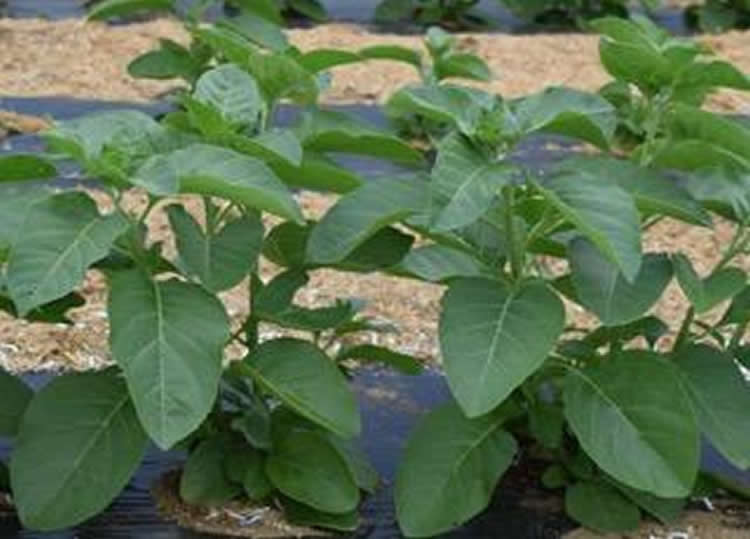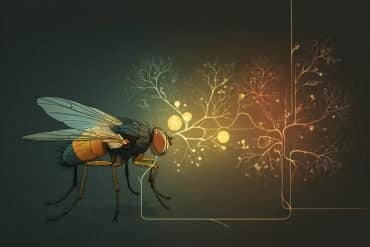Summary: An active compound in the leaves of Ashwagandha can help to induce sleep and could be helpful in the treatment of insomnia, a new study reports.
Source: University of Tsukuba.
Can’t sleep? Your sleep problems may be improved if you try an Indian herb, Ashwagandha. Researchers in the sleep institute in Japan found that an active component of Ashwagandha leaves significantly induces sleep.
Ashwagandha (Withania somnifera) is a central herb in Ayurveda, the traditional home medicine native to India. As signified by its Latin name somnifera, meaning sleep-inducing, it has been recommended for sound sleep through centuries. Even though scientific studies also support that crude powder of Ashwagandha promotes sleep, the active component with sleep-inducing property remains unknown.
The research group led by Mahesh K. Kaushik and Yoshihiro Urade of the International Institute for Integrative Sleep Medicine (WPI-IIIS), University of Tsukuba, investigated the effect of various components of Ashwaganda on sleep in mice by recording electroencephalogram and electromyography. The water extract of Ashwaganda leaf containing rich in triethylene glycol (TEG) promoted non-rapid eye movement (NREM) sleep significantly and changed rapid eye movement (REM) sleep slightly, while the alcoholic extract containing active withanolides showed no effect on sleep. The sleep induced by TEG was similar to normal sleep. Furthermore, commercially available TEG also increased the amount of NREM sleep. They thus concluded that TEG is the active component that induces physiologically sound sleep.

Sleeplessness and other sleep disorder such as restless leg syndrome are common complaints among the middle-aged population. Insomnia is one of the most common neuropsychiatric disorders, with an estimated incident of 10-15% in general population and 30-60% in elderly population. It is closely linked with certain other diseases including obesity, cardiovascular diseases, depression, anxiety, mania deficits etc. Currently available synthetic drugs often show severe side effects. On the other hand, Ashwagandha crude powder including the significant amount of TEG can be consumed for better sleep without any side effects. The findings in this study could revolutionize the natural plant-based therapies for insomnia and sleep related disorders.
However, the clinical application of TEG to treat insomnia is still in the immature status, because the TEG is primarily used for industrial purpose and very little is known about its applicability and toxicity to the biological systems. Further studies will thus be needed to confirm the safety of TEG.
According to the authors, they are currently evaluating the effect of TEG administration on stress, because Ashwagandha is believed to mitigate stress and correct imbalance of various nervous systems. Future studies also include the identification of target brain area of TEG, its BBB permeability and the mechanism through which TEG induces sleep.
This study was conducted in collaboration with Renu Wadhwa and Sunil Kaul of National Institute of Advanced Industrial Science and Technology (AIST), Japan.
Funding: Funding provided by Japan Society for the Promotion of Science, Ministry of Education, Culture, Sports, Science and Technology – Japan.
Source: Masataka Sasabe – University of Tsukuba
Image Source: NeuroscienceNews.com image is credited to University of Tsukuba.
Original Research: Full open access research for “Triethylene glycol, an active component of Ashwagandha (Withania somnifera) leaves, is responsible for sleep induction” by Mahesh K. Kaushik, Sunil C. Kaul, Renu Wadhwa, Masashi Yanagisawa, and Yoshihiro Urade in PLOS ONE. Published online February 16 2017 doi:10.1371/journal.pone.0172508
[cbtabs][cbtab title=”MLA”]University of Tsukuba “Key Component of Sleep Inducing Herb Identified.” NeuroscienceNews. NeuroscienceNews, 31 March 2017.
<https://neurosciencenews.com/ashwagandha-sleep-component-6320/>.[/cbtab][cbtab title=”APA”]University of Tsukuba (2017, March 31). Key Component of Sleep Inducing Herb Identified. NeuroscienceNew. Retrieved March 31, 2017 from https://neurosciencenews.com/ashwagandha-sleep-component-6320/[/cbtab][cbtab title=”Chicago”]University of Tsukuba “Key Component of Sleep Inducing Herb Identified.” https://neurosciencenews.com/ashwagandha-sleep-component-6320/ (accessed March 31, 2017).[/cbtab][/cbtabs]
Abstract
Triethylene glycol, an active component of Ashwagandha (Withania somnifera) leaves, is responsible for sleep induction
Insomnia is the most common sleep complaint which occurs due to difficulty in falling asleep or maintaining it. Most of currently available drugs for insomnia develop dependency and/or adverse effects. Hence natural therapies could be an alternative choice of treatment for insomnia. The root or whole plant extract of Ashwagandha (Withania somnifera) has been used to induce sleep in Indian system of traditional home medicine, Ayurveda. However, its active somnogenic components remain unidentified. We investigated the effect of various components of Ashwagandha leaf on sleep regulation by oral administration in mice. We found that the alcoholic extract that contained high amount of active withanolides was ineffective to induce sleep in mice. However, the water extract which contain triethylene glycol as a major component induced significant amount of non-rapid eye movement sleep with slight change in rapid eye movement sleep. Commercially available triethylene glycol also increased non-rapid eye movement sleep in mice in a dose-dependent (10–30 mg/mouse) manner. These results clearly demonstrated that triethylene glycol is an active sleep-inducing component of Ashwagandha leaves and could potentially be useful for insomnia therapy.
“Triethylene glycol, an active component of Ashwagandha (Withania somnifera) leaves, is responsible for sleep induction” by Mahesh K. Kaushik, Sunil C. Kaul, Renu Wadhwa, Masashi Yanagisawa, and Yoshihiro Urade in PLOS ONE. Published online February 16 2017 doi:10.1371/journal.pone.0172508







